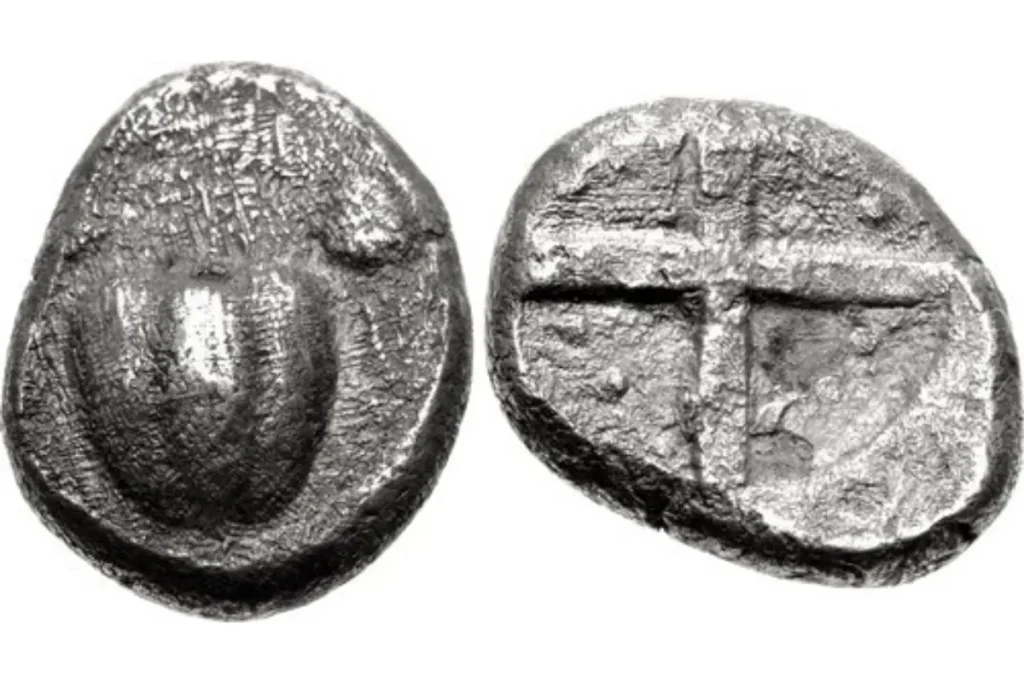Ancient Greek coins are more than just old money—they are fascinating pieces of history. Each coin tells a story about the culture, politics, and mythology of its time.
While many people know about famous coins like the Athenian Owl, there are many lesser-known coins that are very valuable to collectors and historians. Let’s explore some of these rare gems.
Silver Stater of Melos (450-40 BC)

- Origin: Melos Island
- Features: This coin shows an apple on one side. The apple represents the island itself, as “Melos” means “apple” in Greek. The other side usually has an incuse square with a cross.
- Significance: The apple symbolized Melos and cleverly communicated the island’s identity to a largely illiterate population at the time.
Cnossus Silver Stater (350-300 BC)
- Origin: Crete
- Features: This coin is known for its image of a labyrinth on the back, referencing the famous myth of the Minotaur and King Minos’ legendary labyrinth.
- Significance: The labyrinth represents Crete’s ancient power and its connection to the well-known story of Theseus and the Minotaur.
Gortyna Silver Stater (350-22 BC)

- Origin: Gortyna, Crete
- Features: This coin shows the myth of Europa being carried off by Zeus, who took the form of a bull.
- Significance: The myth of Europa inspired ancient festivals in Gortyna and gave her name to the continent of Europe.
Silver Drachm of Chios (5th Century BC)
- Origin: Chios
- Features: One side of the coin features Apollo, the god of music and prophecy, while the other side shows a lyre, a symbol of musical harmony.
- Significance: This coin highlights Chios’ dedication to Apollo and its rich musical culture, which was highly esteemed in ancient times.
The Importance of Ancient Greek Coins
These ancient Greek coins served not only as currency but also carried deep cultural and mythological significance. Each coin provides a snapshot of the values and stories that were important to the people of that era.
From clever wordplay to mythical references, these rare coins offer valuable insights into ancient Greek society.
Ancient Greek coins like the Silver Stater of Melos, Cnossus Silver Stater, Gortyna Silver Stater, and Silver Drachm of Chios give us a unique look into a world long gone. They tell stories of gods, myths, and the lives of the people who used them.
By studying these coins, we can learn about the culture, history, and beliefs of ancient Greece. Coins were not just a way to buy goods; they were a reflection of identity, values, and the rich history of the civilization.
Understanding these coins allows us to appreciate the depth and complexity of ancient Greek society and its lasting impact on our world today.
What are ancient Greek coins made of?
Ancient Greek coins were mainly made of silver, gold, and bronze.
Why are these coins important?
They tell us stories about the culture, politics, and mythology of ancient Greece.
What did people use coins for?
People used coins to buy goods and pay for services in their daily lives.
How can I tell if an ancient coin is real?
Authenticating ancient coins often requires expert evaluation based on features, weight, and historical context.
Where can I find ancient Greek coins?
You can find them in museums, at coin shows, or through specialized dealers and collectors.















